section-1414e32
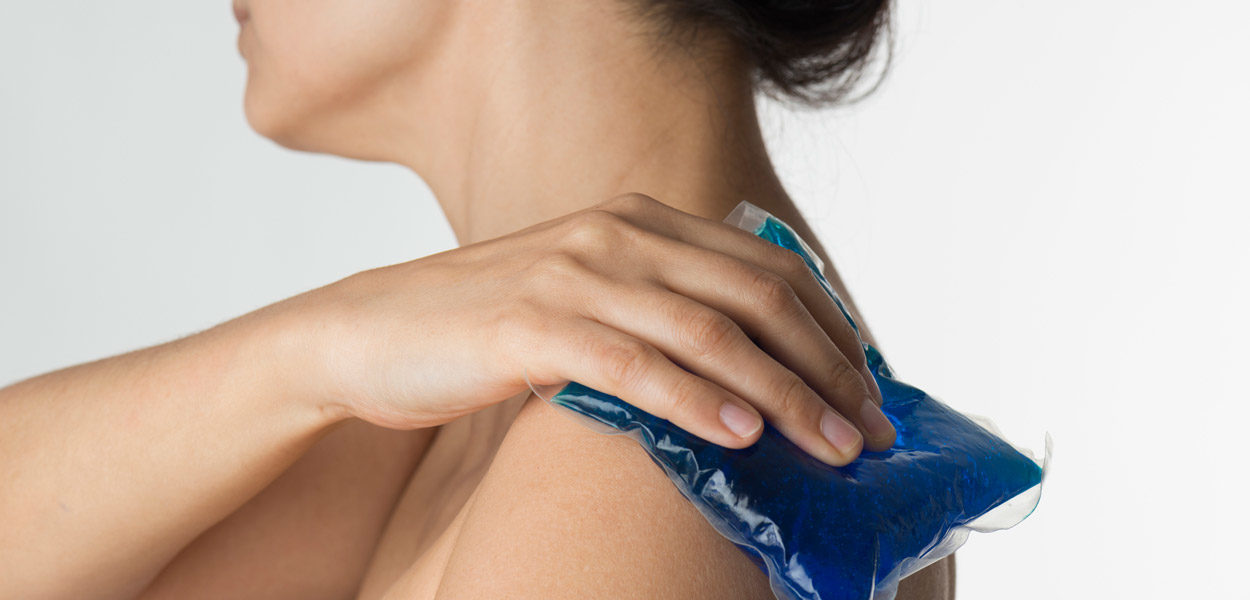
section-018cc4c
Common conditions or injuries that may impact the health of the upper extremity include frozen shoulder, AC joint injury, rotator cuff injury, shoulder bursitis, impingement syndrome, tennis elbow, golfer’s elbow, carpal tunnel syndrome, and trigger finger. It’s imperative to obtain treatment for symptoms of these conditions as soon as possible to reduce the risk of needing surgery and a prolonged recovery.
Frozen shoulder
Patients with this condition experience stiffness and pain in their shoulder joint, with symptoms worsening over time and resolving typically within one to three years. Frozen shoulder occurs when the capsule of connective tissue encasing the shoulder joint thickens and tightens. The condition has three stages:
- Freezing stage. Moving the shoulder causes pain and the shoulder’s range of motion becomes limited.
- Frozen stage. Pain is less, but the shoulder is stiffer and difficult to use.
- Thawing stage. The shoulder’s range of motion gradually improves.
Treatment for frozen shoulder may include range-of-motion exercises, corticosteroids, and numbing medications injected into the joint capsule
section-24f3387
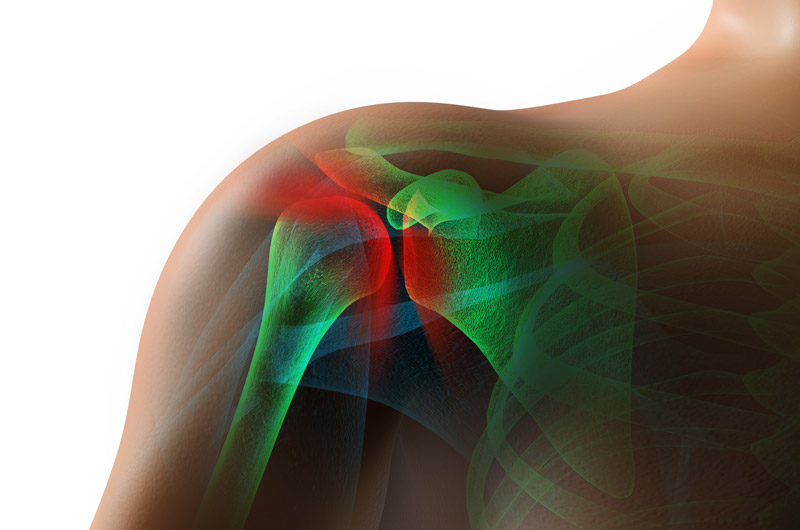

section-c8617d2
AC joint injury
The AC joint is where a part of the shoulder blade connects to the collar bone at the top of the shoulder. Injury to the capsule and ligaments can cause instability in the joint and affect shoulder function. A fall onto the shoulder and arthritis can contribute to the risk of an AC joint injury.
Symptoms include pain over the AC joint at the top of the shoulder, swelling, a bump, tightness and loss of motion at the shoulder, and pain when lifting the arm up to the side or across the front of the body. An AC joint injury may be treated with physical therapy, rest, and activity modification. Some patients may require surgery.
Rotator cuff injury
The group of muscles and tendons surrounding the shoulder joint is called the rotator cuff. Injury to the rotator cuff can lead to a dull ache in the shoulder, sleep disturbances, arm weakness, and difficulty combing your hair or reaching behind your back. Rotator cuff disease may be caused by substantial injury to the shoulder, progressive degeneration, or wear and tear of the tendon tissue. The condition may be treated with steroid injections, physical therapy, and surgery.
section-ffa93cb
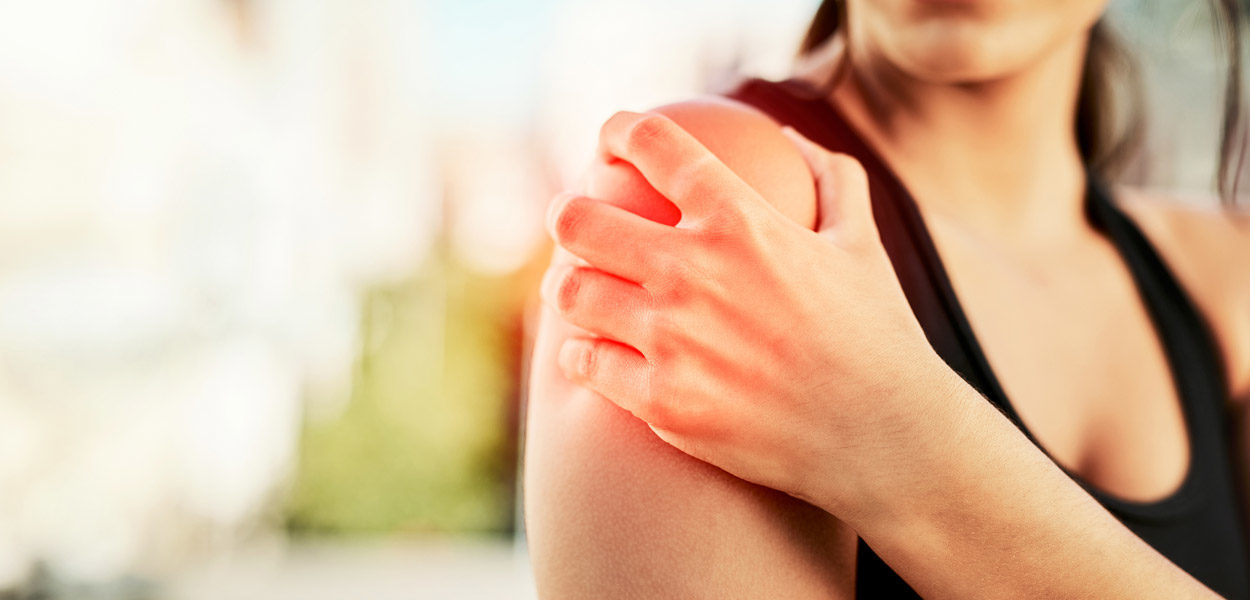
section-c301c03
Shoulder bursitis/tendinitis
A bursa is a thin, sac-like structure located between skin and bones, tendons and bones, and ligaments and bones to decrease friction between bones and tissues. Bursitis is caused by too much stress on the bursa, leading to symptoms that may include swelling, excessive warmth, tenderness, pain, fever, redness beyond the affected site, and fatigue. Shoulder bursitis, also called tendinitis, may be treated with ice, NSAIDs, and range-of-motion exercises.
section-a2456fe
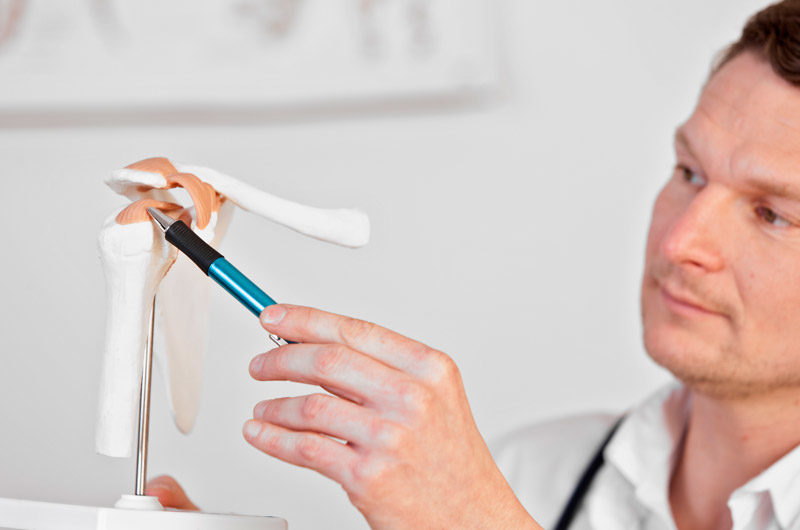

section-004dbe9
Impingement syndrome
Impingement syndrome occurs as a result of prolonged rubbing of the rotator cuff between the humerus and top outer edge of the shoulder. The rubbing leads to further swelling and narrowing of the space, causing pain and irritation. Impingement syndrome is common among swimmers and baseball, volleyball, and tennis players. Window washers and painters are also at increased risk of developing the condition. Treatment may involve rest, ice, anti-inflammatory medication, physical therapy, cortisone injections, and surgery.
Tennis elbow
Repetitive motions of the wrist and arm can cause the tendons in the elbow to be overloaded and develop a condition called tennis elbow. Tennis players, plumbers, painters, carpenters, and butchers are at risk of developing pain and weakness when trying to shake hands, grip an object, turn a doorknob, and hold a coffee mug. Tennis elbow typically resolves on its own with the help of over-the-counter pain medication and self-care. But some patients may require physical therapy and even surgery.
section-33dae02
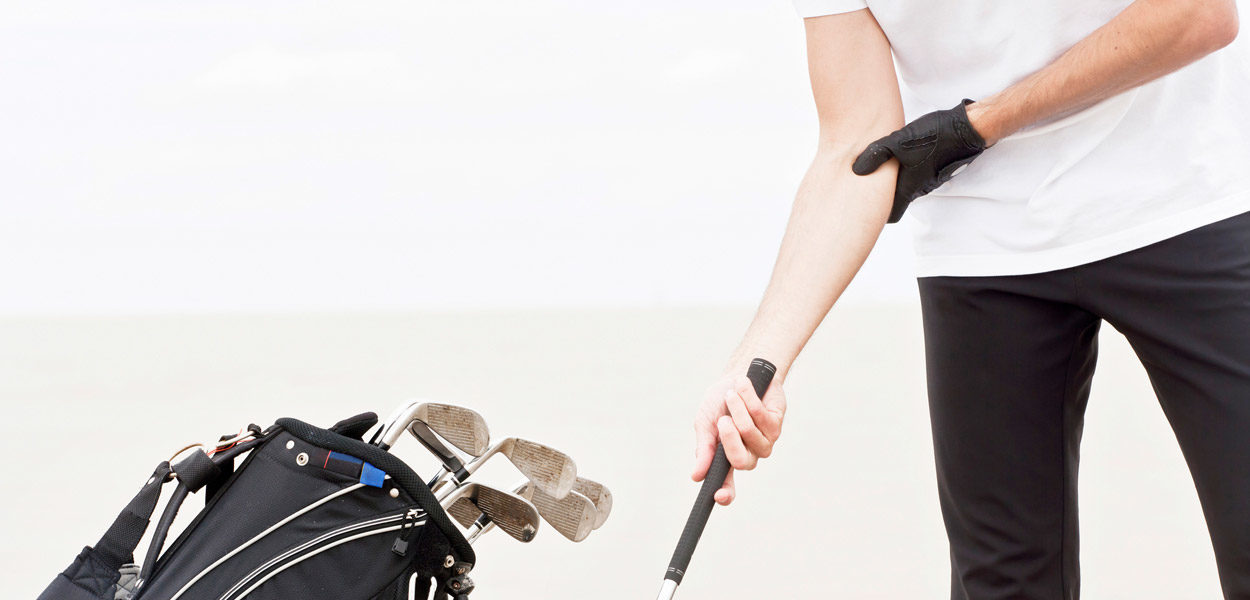
section-d1461ea
Golfer’s elbow
Pain where the tendons of the forearm muscles attach to the bony bump on the inside of the elbow is a symptom of the condition called golfer’s elbow. Other symptoms include stiffness, weakness, and numbness or tingling. The risk of developing golfer’s elbow is increased by racket sports, throwing sports, weight lifting, and forceful, repetitive occupational movements. To treat golfer’s elbow, patients will need to avoid the activity causing the pain, apply ice, take over-the-counter pain relieving medication, and stretch and strengthen the affected area. In rare instances, patients may need to undergo surgery.
section-a80a2a1
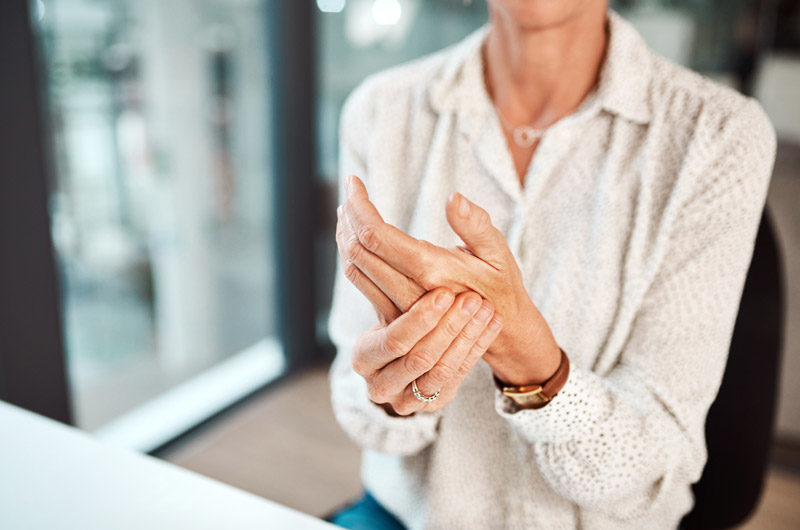
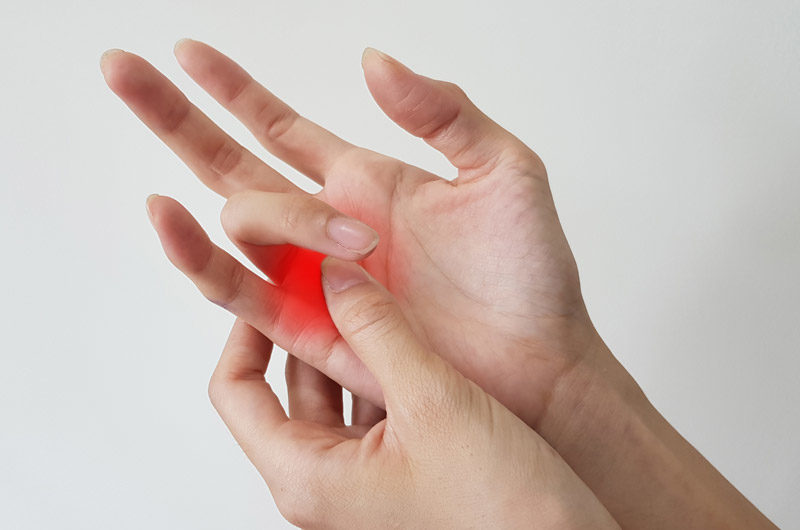
section-40eb922
Carpal tunnel syndrome
Pressure on the median nerve can lead to symptoms of carpal tunnel syndrome, such as numbness, tingling, and weakness in the hand and arm. Risk of developing the condition may increase due to anatomy of the wrist, obesity, use of certain medications, changes in body fluids, and occupations requiring repetitive hand motions. Symptoms of carpal tunnel syndrome may be alleviated by:
- Taking frequent rest breaks to the hands
- Avoiding activities that worsen symptoms
- Applying cold packs to reduce swelling
The condition may also be treated with a wrist splint, medication, corticosteroids, hand therapy, ultrasound therapy, lifestyle and home remedies, and surgery.
Trigger finger
Trigger finger or trigger thumb is characterized by stiffness when bending the finger and/or hearing a snapping or popping sound when moving the finger. The condition is especially common among farmers, industrial workers, and musicians who use their fingers or thumbs to make repetitive movements.
Mild cases of trigger finger may be treated with rest, a splint, and anti-inflammatory medications. Some patients may require surgery to cut the sheath through which the tendons pass to widen the space and allow the tendon to slide easily through the sheath. This will help to restore the finger’s ability to bend and straighten without any stiffness or pain.
